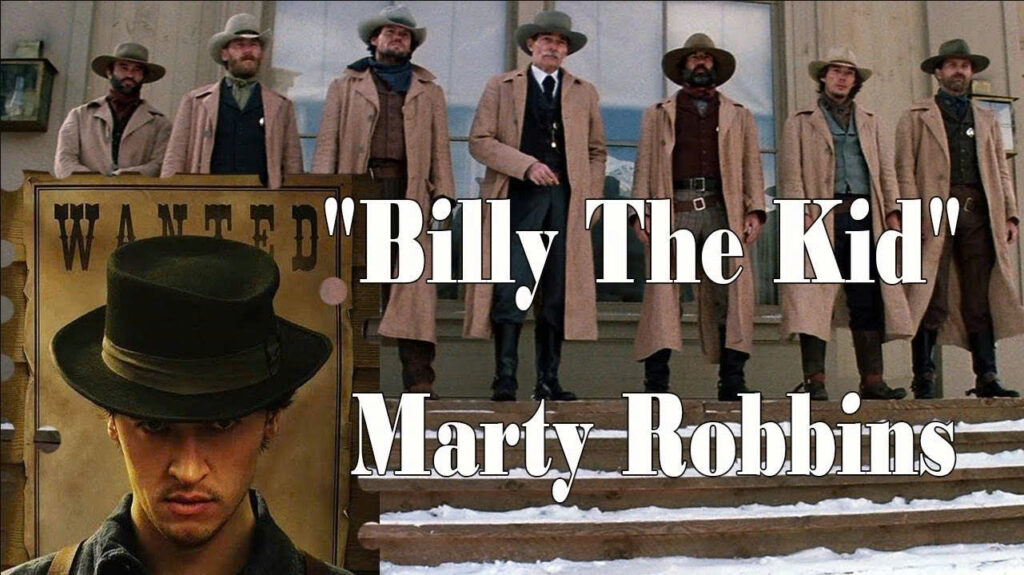
Echoes of a Vanishing Frontier: The Tragic Ballad of Billy the Kid
Ah, the whispers of the past, carried on the dusty winds of time. For many of us, particularly those who remember a world less hurried, less saturated with instant gratification, there’s a particular resonance to the tales spun in song. They weren’t just melodies; they were historical documents, emotional landscapes, and echoes of lives lived, sometimes violently, often tragically. And few songs encapsulate that feeling quite like Marty Robbins’ haunting rendition of “Billy the Kid.” Released as part of his groundbreaking 1959 concept album, “Gunfighter Ballads and Trail Songs,” this track wasn’t a single in the conventional sense, gracing the pop charts in the way we typically think of them today. Instead, its impact was woven into the very fabric of the album, which itself became a monumental success, peaking at number six on the Billboard Top LPs chart. This wasn’t about a fleeting moment on the airwaves; it was about an enduring classic, an album that would go on to be inducted into the Grammy Hall of Fame.
The story behind “Billy the Kid” is as old as the American West itself, a narrative steeped in the lore of outlaws and lawmen, of vast, unforgiving landscapes and the desperate choices made within them. Marty Robbins, a master storyteller with a voice as smooth as aged whiskey, didn’t just sing about these figures; he embodied them. He transported listeners back to a time when legends were born in gunsmoke and shadows. The song itself is a vivid portrayal of William H. Bonney, the notorious outlaw whose short life was packed with more drama and danger than a dozen dime novels. But it’s not a glorification; it’s a lament, a mournful reflection on a life cut tragically short.
The meaning of “Billy the Kid” extends far beyond a simple recounting of historical events. It’s a poignant exploration of youth, fate, and the relentless pursuit of freedom, even when it leads to destruction. For older listeners, it evokes a sense of nostalgia for a simpler, perhaps more rugged, time—a time when the lines between good and evil, hero and villain, were often blurred by the harsh realities of survival. The lyrics paint a picture of a young man, barely out of his teens, thrust into a life of violence, not always by choice, but by circumstance and the unforgiving nature of the frontier. We hear of his daring escapes, his loyalty to his friends, and ultimately, his inevitable demise at the hands of Pat Garrett. It’s a tale that resonates with the universal theme of a life lived on the edge, a candle burning brightly but briefly.
What truly sets Robbins’ version apart, and what makes it so enduringly powerful for those of us who appreciate the art of a well-told story, is its emotional depth. He doesn’t just sing the words; he feels them. The somber melody, the deliberate pacing, and the raw emotion in his voice transform a historical account into a deeply human tragedy. It’s a song that speaks to the inevitability of destiny, to the price of a life lived outside the bounds, and to the enduring appeal of the rebellious spirit. For many, this song, and indeed the entire “Gunfighter Ballads and Trail Songs” album, served as an introduction to a romanticized, yet often brutal, period of American history. It allowed us to glimpse a world through the eyes of those who lived it, to understand their struggles, and to feel a pang of empathy for even the most notorious figures. It’s a timeless piece, a reminder that some stories, like some melodies, never truly fade, but rather grow richer with each passing year, echoing through the halls of our memories like the distant sound of hoofbeats on a forgotten trail.